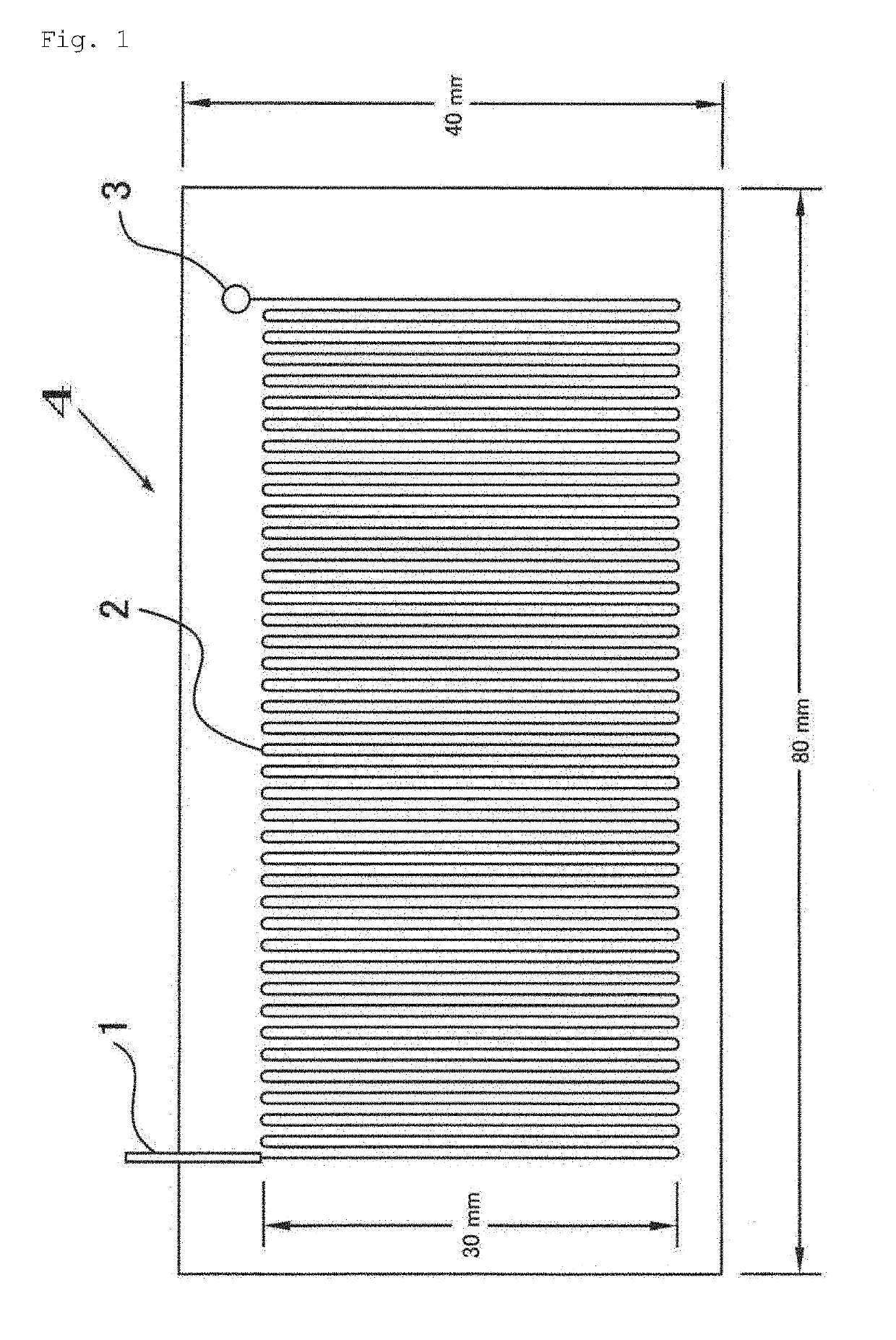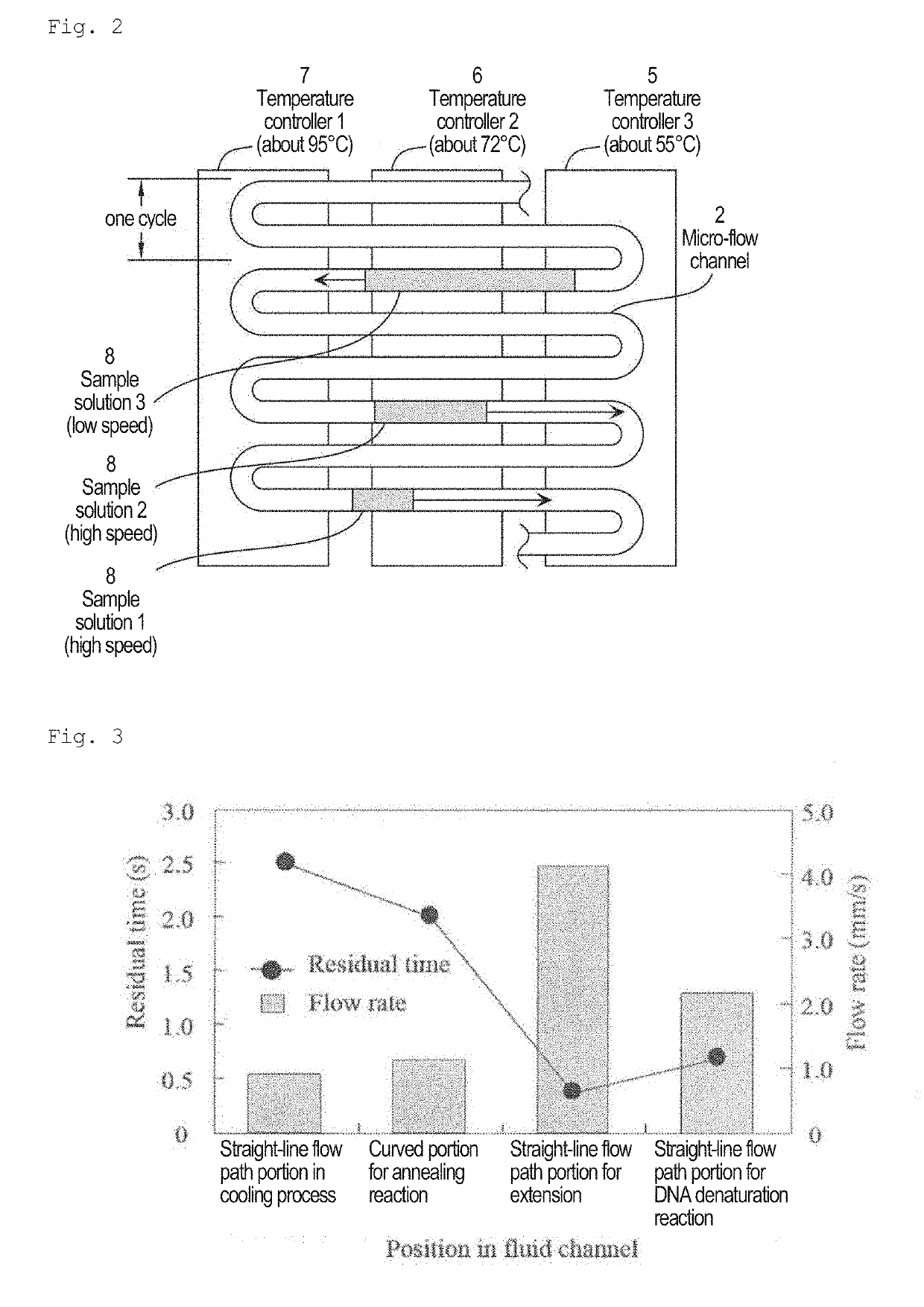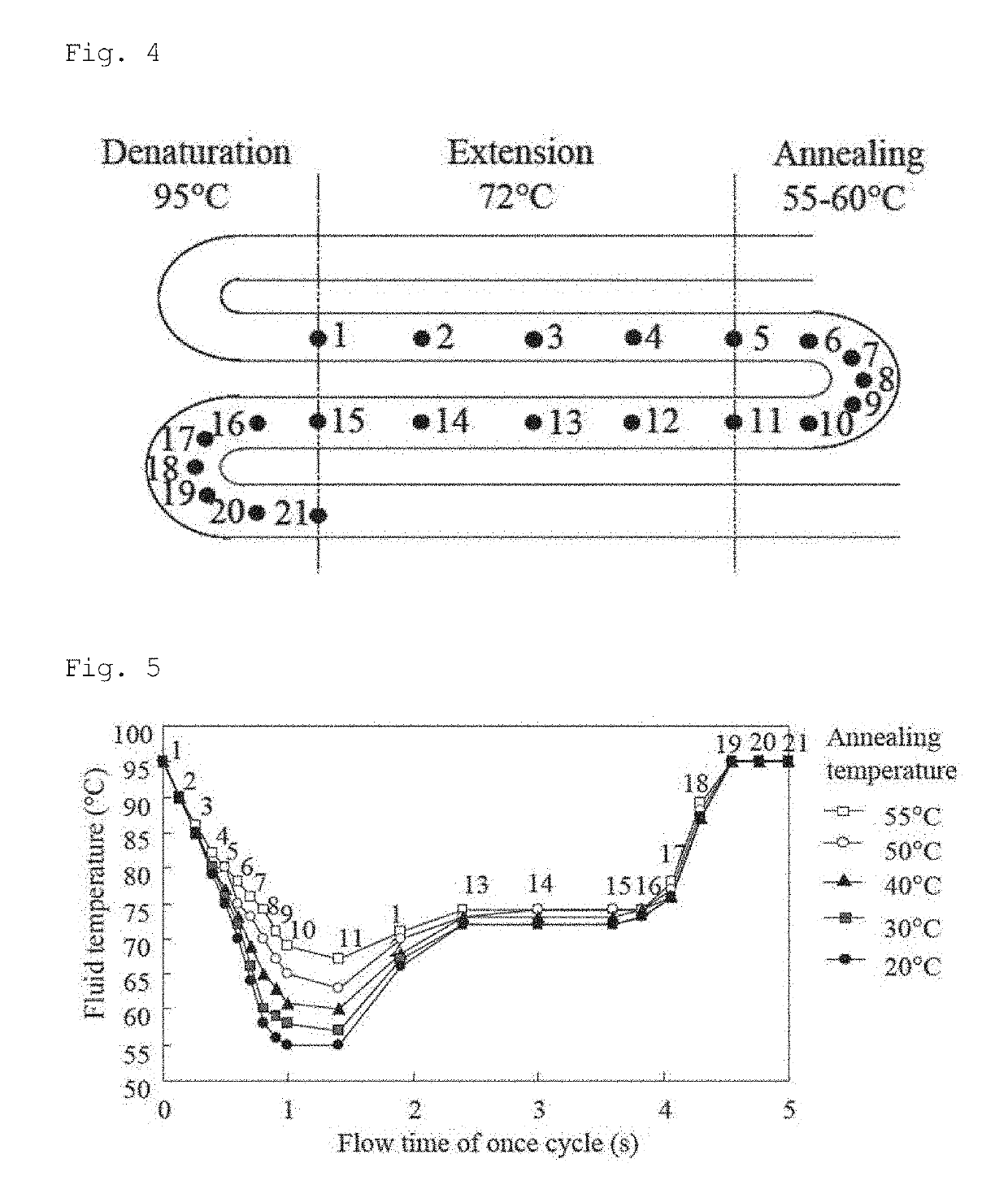Nucleic acid amplification method
a nucleic acid and serpentine channel technology, applied in the direction of fermentation, biochemistry apparatus and processes, microbiological testing/measurement, etc., can solve the problems of reducing the thermal capacity of the heater or the chamber itself, slow temperature control, and affecting the quality of the sample, so as to minimize the analytical volume, the effect of advantageous characteristic features and high sensitivity
- Summary
- Abstract
- Description
- Claims
- Application Information
AI Technical Summary
Benefits of technology
Problems solved by technology
Method used
Image
Examples
Embodiment Construction
[0049]The present invention relates to a nucleic acid amplification method using a very high-speed polymerase chain reaction (PCR) in a micro-flow channel, which repeatedly passes through a plurality of temperature zones in a meandering manner. More specifically, an object of the present invention is to provide a method using a micro-flow channel in a flat-plate type microfluidic system for continuous-flow PCR, provided with a flow channel design for accurately controlling the temperature of a PCR sample flowing as sample plugs separated by air by and appropriately set flow conditions thereby performing ultra-rapid nucleic acid amplification in the flow channel.
[0050]In this specification, a plurality of temperature zones indicates a DNA denaturation temperature zone, an annealing temperature zone, and an extension temperature zone. It is possible for these three temperature zones to be clearly distinguished from each other by a heating device (heater) or a cooling device. It is als...
PUM
| Property | Measurement | Unit |
|---|---|---|
| temperature | aaaaa | aaaaa |
| cross-sectional aspect ratio | aaaaa | aaaaa |
| aspect ratio | aaaaa | aaaaa |
Abstract
Description
Claims
Application Information
 Login to View More
Login to View More - R&D
- Intellectual Property
- Life Sciences
- Materials
- Tech Scout
- Unparalleled Data Quality
- Higher Quality Content
- 60% Fewer Hallucinations
Browse by: Latest US Patents, China's latest patents, Technical Efficacy Thesaurus, Application Domain, Technology Topic, Popular Technical Reports.
© 2025 PatSnap. All rights reserved.Legal|Privacy policy|Modern Slavery Act Transparency Statement|Sitemap|About US| Contact US: help@patsnap.com



